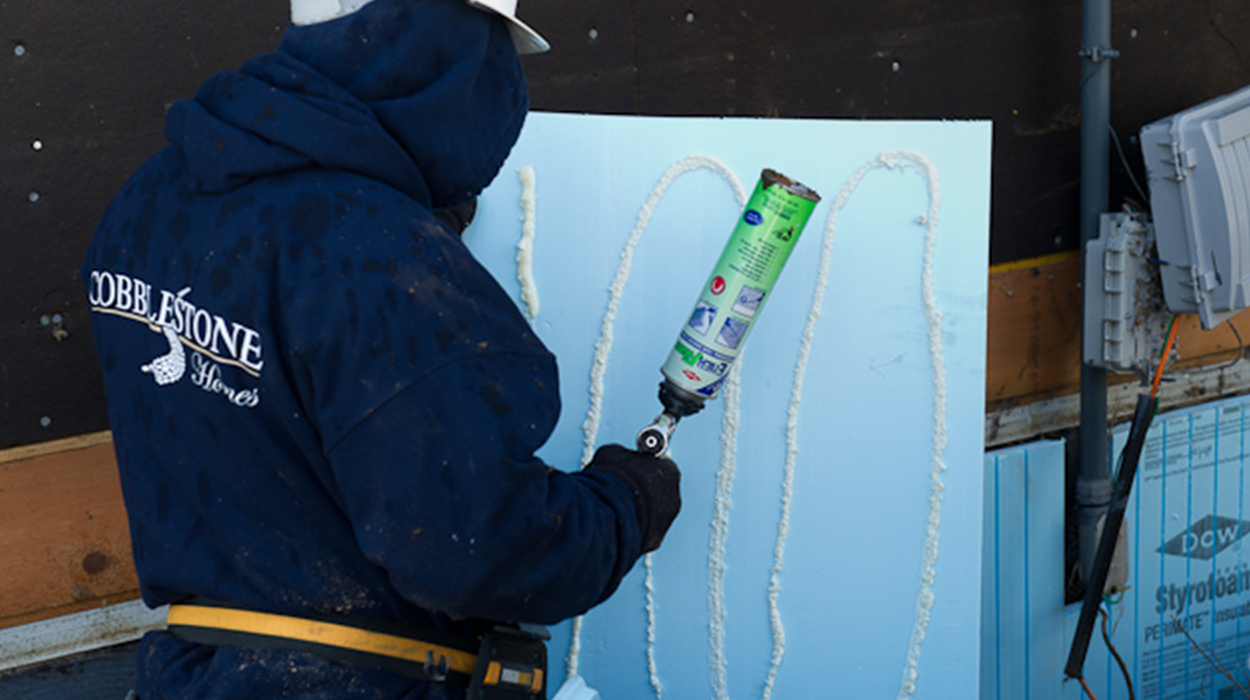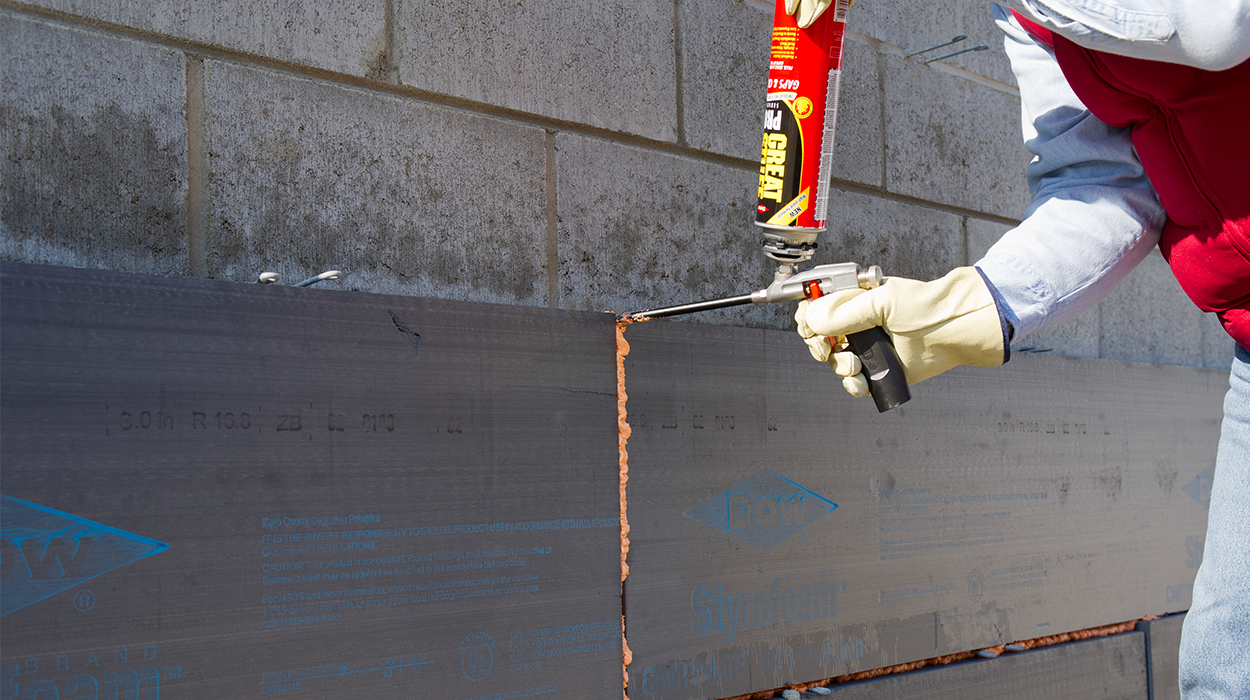Top 4 Installation Techniques & Recommendations for Styrofoam™ Brand XPS Insulation
Article | January 8, 2018
Top 4 installation techniques & recommendations for Styrofoam™ Brand XPS insulation you need to know
Have you ever seen a home or building built the same way twice? Given the specific needs of each project, installation and compatibility questions are among our top of our building science experts.
So we pressed our most experienced experts to the burning questions asked about installing Styrofoam™ Brand XPS Insulation, our award-winning building envelope solution.
1. What are the recommended adhesives for Styrofoam™ Brand XPS insulation?

This is the single-most popular question. Here’s the answer: Adhesives from DuPont offer dependable, long-term service for a wide variety of applications and are compatible with most construction materials. Commonly used adhesives with DuPont™ Styrofoam™ Brand XPS Insulation include Great Stuff Pro™ Construction Adhesive and DuPont™ Betafuse™ Laminating Adhesives.
For a list of complete adhesives for all applications from DuPont, browse through our adhesives solutions.
There may be other adhesive manufacturers compatible with XPS insulation. Check the adhesive container or with the manufacturer to determine if a particular adhesive is compatible with polystyrene-based insulations.
2. What are the recommended fasteners for Styrofoam™ Brand Insulation?
There unfortunately isn’t one simple answer for this. The choice of fastener for Styrofoam™ Brand Extruded Polystyrene Foam Insulation is completely dependent on the application. There are many fastener manufacturers located throughout North America. You can consult your local construction supplier for advice on which fasteners should be used for a particular application.
A partial list of fastener manufacturers is shown here:
- Ties and Anchors
- Pos-I-Tie brick veneer anchoring system
- TAPCON concrete anchors and other fasteners
- Insulation anchors for concrete or masonry walls
- UCAN Fastening Products
- Hilti
3. How is Styrofoam™ Brand XPS used with sheathing seam sealing?

Caulking or taping the joint seam of an insulation sheathing board over metal or wood studs should be done to reduce air infiltration through these seams (the air that passes through the seam and into the building).
Styrofoam™ Brand Extruded Polystyrene Foam Insulation sheathings such as Styrofoam™ Brand Cavitymate™ or Styrofoam™ Brand Ultra SL Insulation provide a coat of continuous insulation over the stud members (when properly installed) and are treated with durable joint treatments such as Great Stuff Pro™ Gaps & Cracks or LiquidArmor™ Flashing and Sealant as an integrated air and water barrier system.
For more information on controlling air infiltration, visit our website.
4. When z-furring is used to secure the insulation sheathing, is it still considered to be continuous?
The short answer: no. Insulation placed between z-furring does not meet the definition of continuous insulation. This is because the z-furring represents a line of continuous metal penetrating the insulation and short circuiting heat around the insulation. This dramatically reduces the effective R-Value of the insulation.
A continuous insulation layer can only be achieved when the amount of metal that penetrates the insulation can be made very small, such as when only fasteners penetrate the insulation.
When you compare the two illustrations, you can see that fasteners contain only a small fraction of the metal cross section as does the z-furring. Insulation held in place with fasteners is considered continuous, z-furring is not.
Download our typical detail set for further information.
